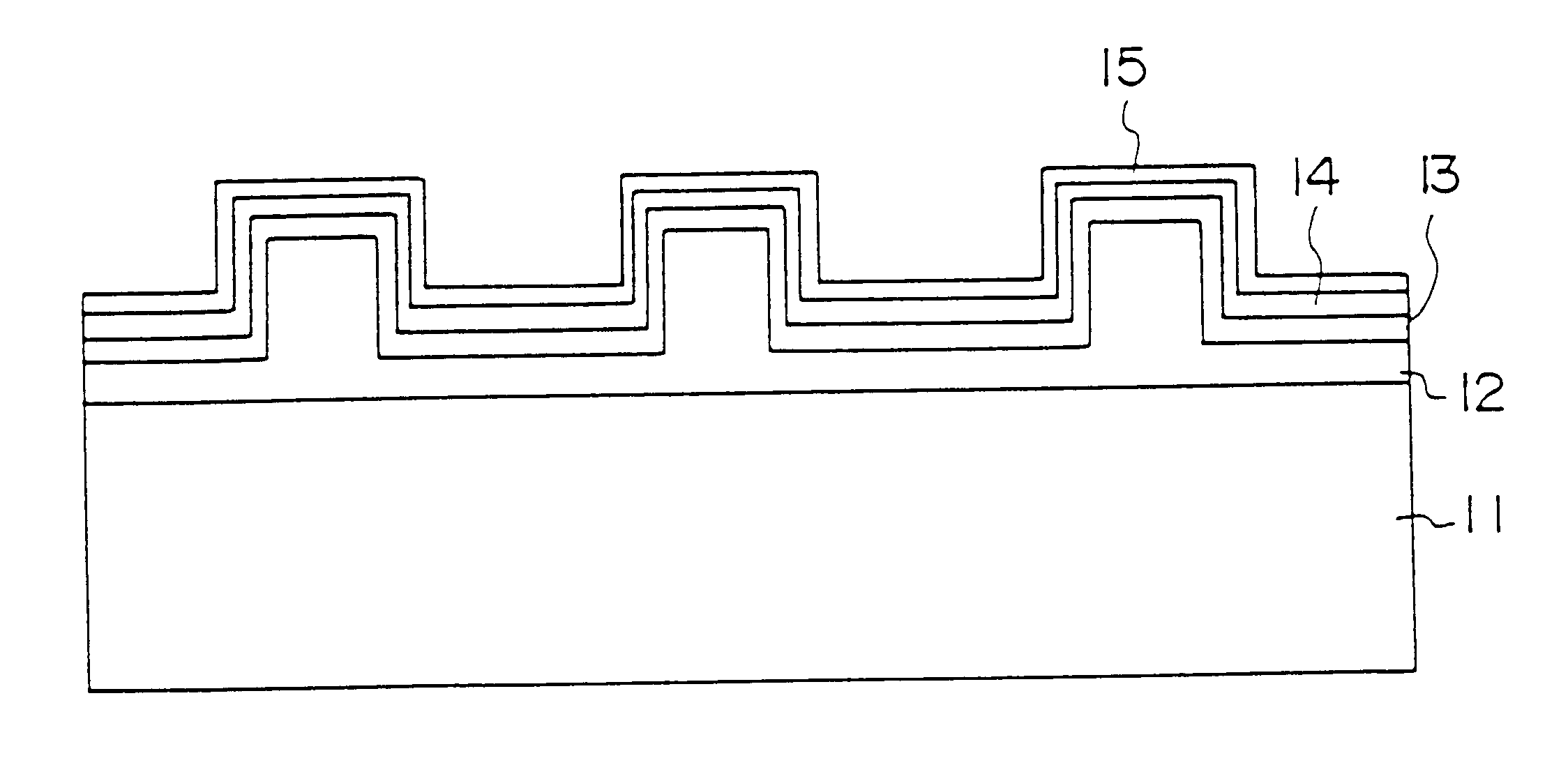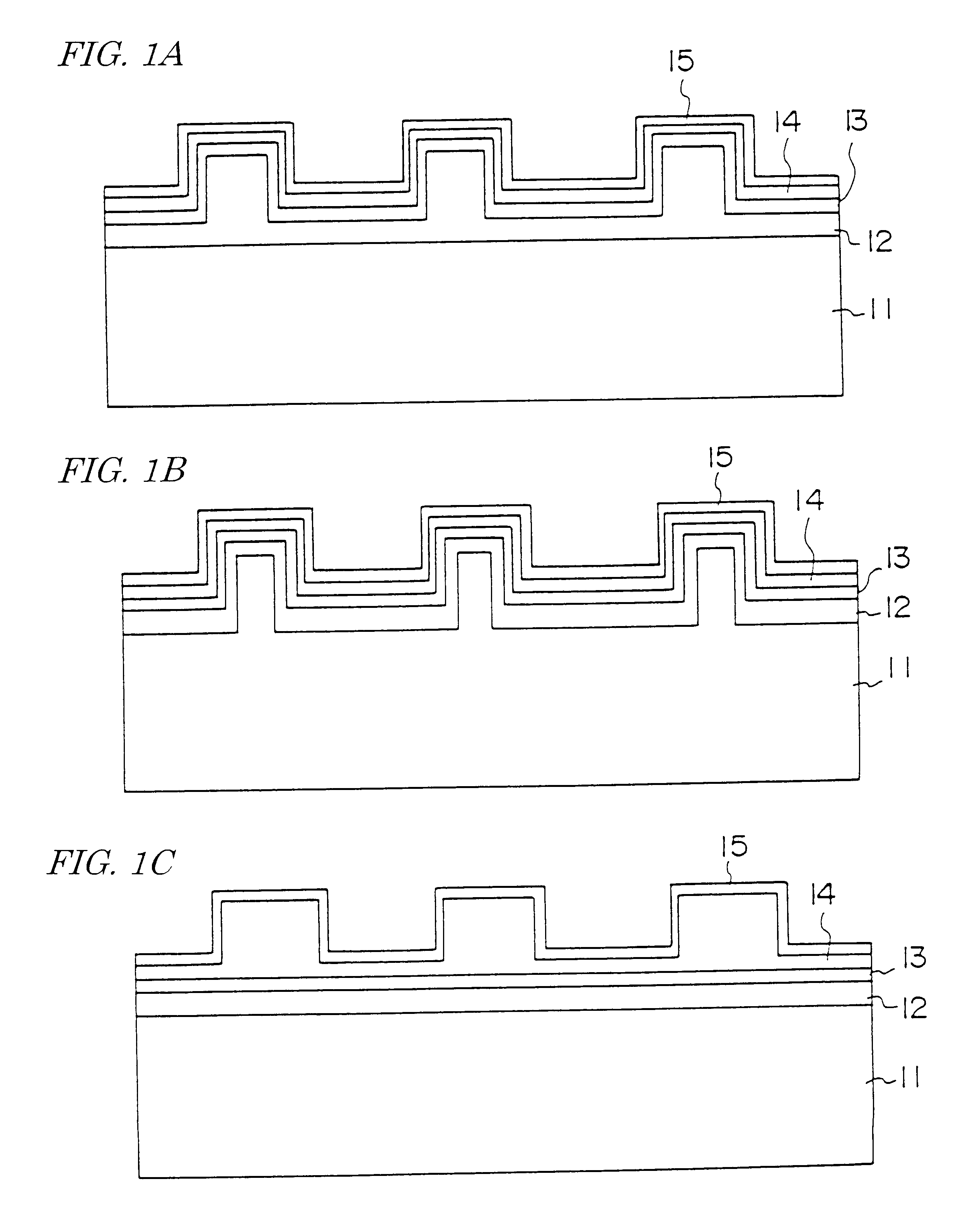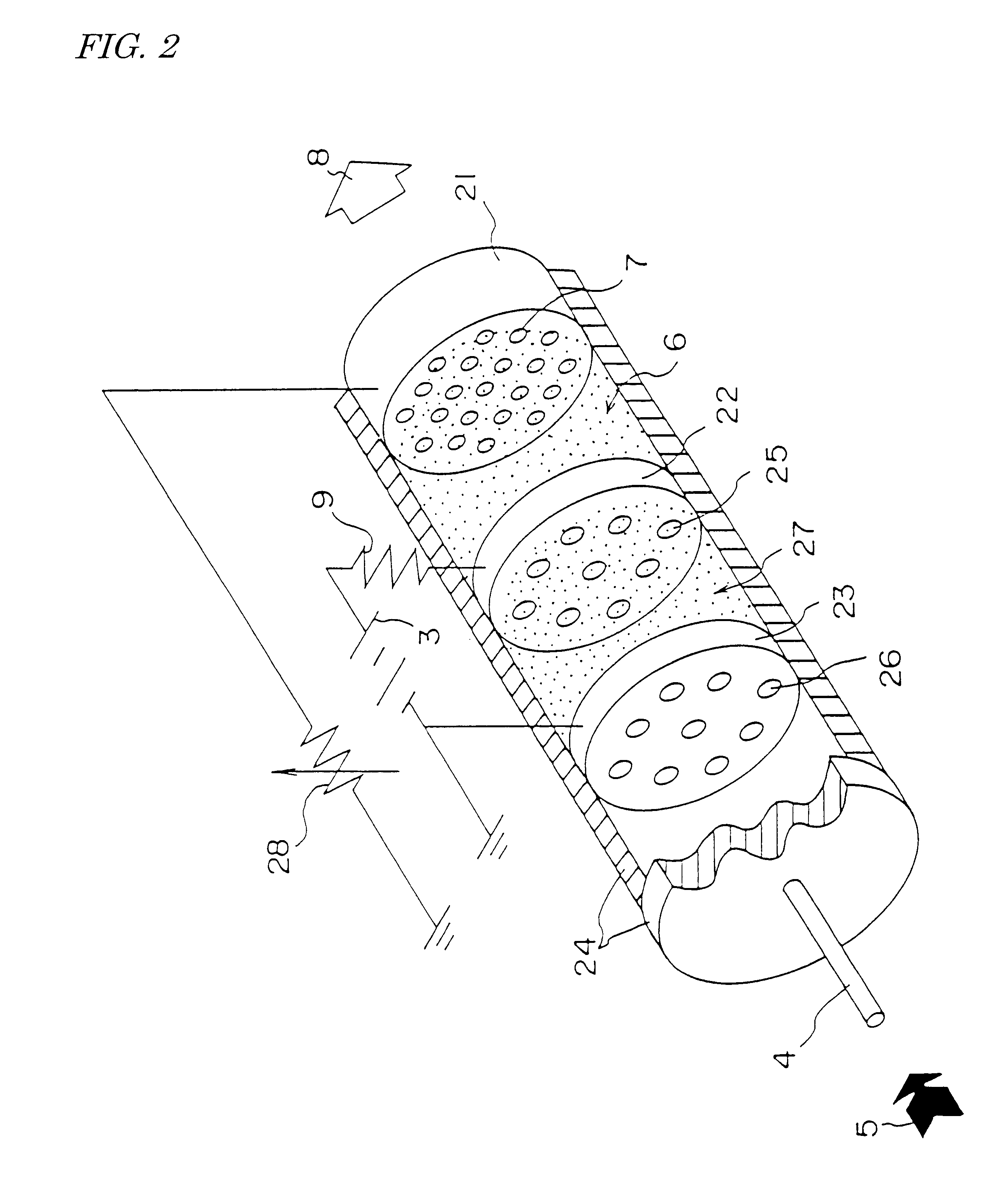Magnetic recording disk
a magnetic recording and magnetic technology, applied in the field of magnetic recording mediums, can solve the problems of poor accuracy, large variation of surface irregularities, and attract the head, and achieve the effects of less chemical reaction, less sublimation, and increased temperature of the disk surface and reaction produ
- Summary
- Abstract
- Description
- Claims
- Application Information
AI Technical Summary
Benefits of technology
Problems solved by technology
Method used
Image
Examples
##ventive example
THIRD INVENTIVE EXAMPLE
FIGS. 6A and 6B show an example in which an Ni--P layer 12 or a glass substrate 16 is processed by a high-speed atomic beam using a chlorine gas. An Ni--P layer 12 is coated to a thickness of about 5 .mu.m on both surfaces of an aluminum substrate 11 having an outside diameter of 130 mm. The Ni--P layer 12 may be coated on a glass substrate 16 rather than the aluminum substrate 11. Fine crystalline particles 18 of alumina are uniformly scattered and placed on both surfaces of the substrate at a density of about 12,000 particles / mm.sup.2. The fine particles 18 of alumina have an outside diameter of 5 .mu.m, and are scattered in the same manner as with the second inventive example.
The substrate is mounted on a substrate stage in a vacuum chamber, and a high-speed atomic beam is applied simultaneously to both surfaces of the substrate. Therefore, the vacuum chamber is equipped with two high-speed atomic beam sources. The stage grips the outer circumferential edge...
PUM
| Property | Measurement | Unit |
|---|---|---|
| Height | aaaaa | aaaaa |
| Density | aaaaa | aaaaa |
| Magnetism | aaaaa | aaaaa |
Abstract
Description
Claims
Application Information
 Login to View More
Login to View More - R&D
- Intellectual Property
- Life Sciences
- Materials
- Tech Scout
- Unparalleled Data Quality
- Higher Quality Content
- 60% Fewer Hallucinations
Browse by: Latest US Patents, China's latest patents, Technical Efficacy Thesaurus, Application Domain, Technology Topic, Popular Technical Reports.
© 2025 PatSnap. All rights reserved.Legal|Privacy policy|Modern Slavery Act Transparency Statement|Sitemap|About US| Contact US: help@patsnap.com



